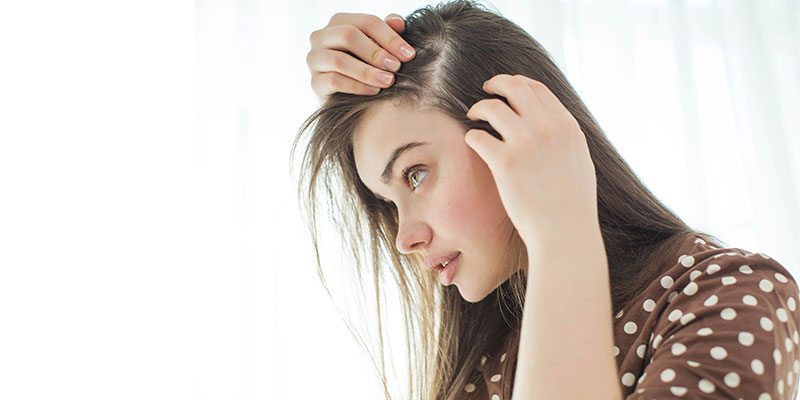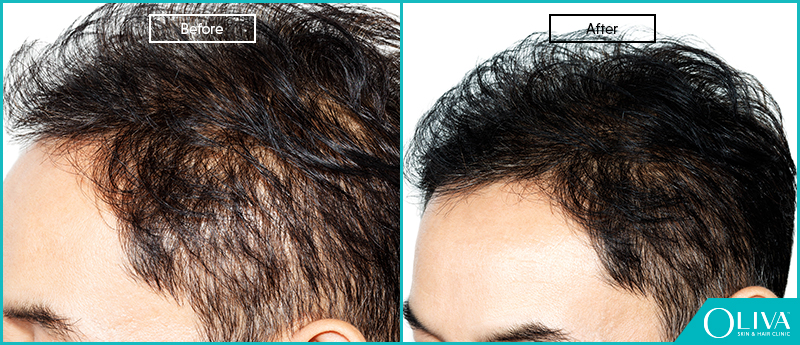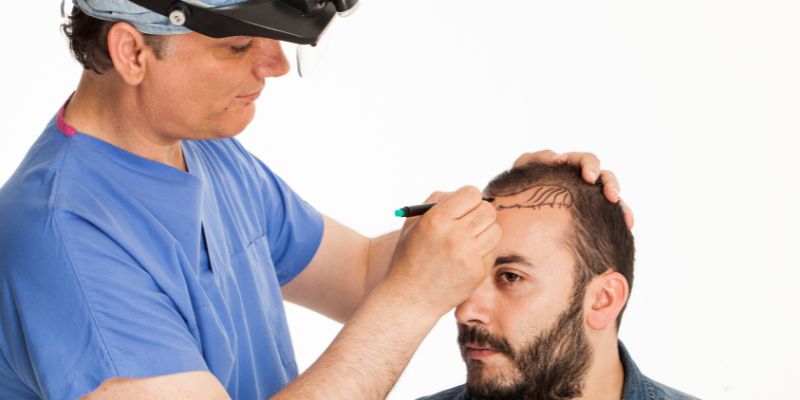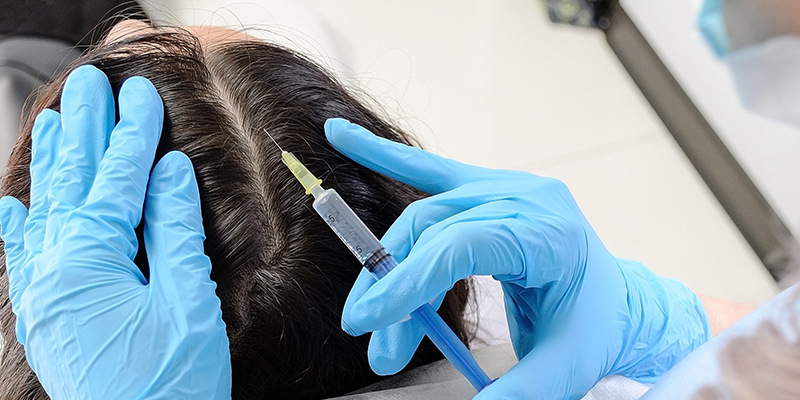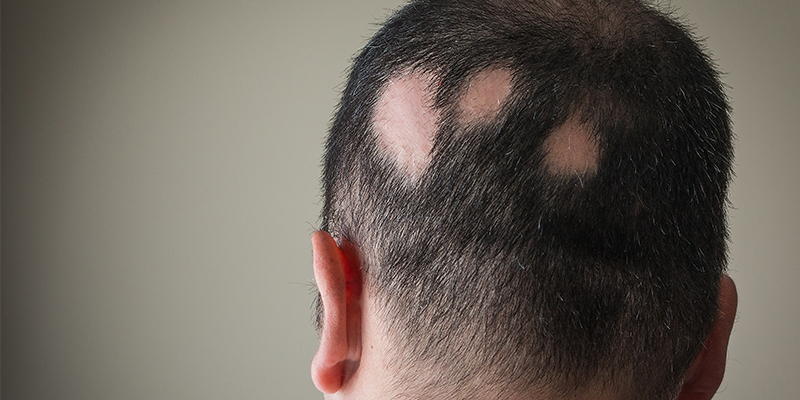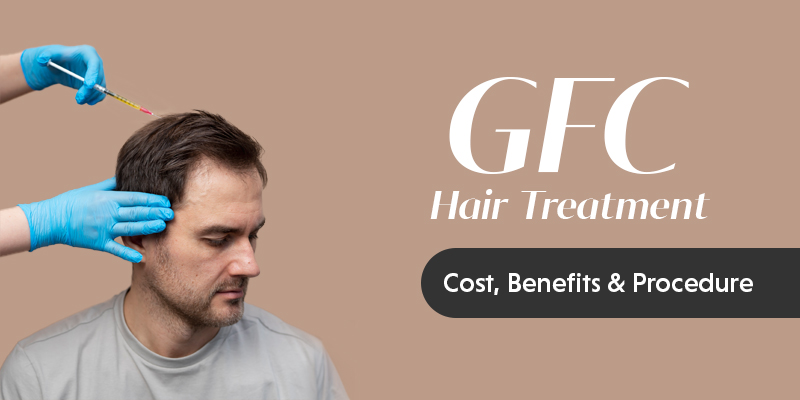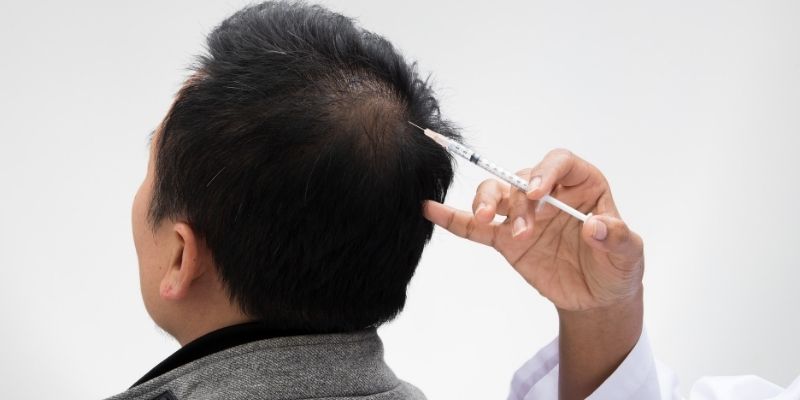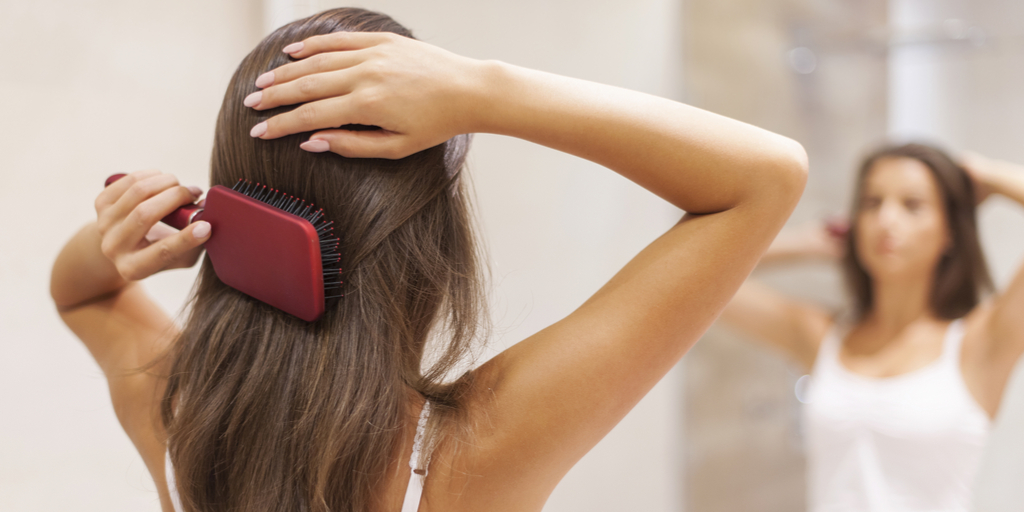How To Stop Hair Thinning In Men And Women?
Is your crown becoming more visible with each passing day? Well, many factors can cause hair thinning even before ageing begins. Let us understand in detail what are the causes of thinning hair, how to stop it and most importantly can hair grow back? Read this article to know the best treatment options for both men and women to treat this condition.
What Is Hair Thinning?
We usually lose around 100-120 strands in a day. If you begin to lose more hair than that, then it may be a cause of concern.
Hair passes through three stages of life cycle namely growth, resting and shedding phases. If there are any disturbances in the hair life cycle or any factors affecting the growth of hair follicles, then hair thinning begins.
Though baldness is more common in the 4th-5th decade of life for both men and women, its incidence is increasingly affecting young adults as well.
Must Read: PRP Treatment For Hair Loss : Procedure And Cost
Hair Thinning Vs Balding
Thin hair and balding are not the same. Acute thinning of hair may lead to balding. Reduction in the thickness of the shaft or the number of hair both cause thinning of hair, but this may not necessarily mean balding. But if you ignore the early signs of hair thinning, you may eventually suffer from baldness.
What Causes Hair Thinning In Men And Women?
Several conditions can trigger hair thinning so finding the exact reason can be somewhat challenging. Here we have discussed the most common causes –
- Stress: The kind of stressful life that we live, it is no wonder that it has such adverse effects on our hair. More than mental stress it is the physical stress that causes thinning of hair. Stress can lead to different types of hair loss.
- Genes: Have you noticed either of your parents suffering from hair loss? If yes, then the chances of you facing the same issue are high. Your genes are one of the major causes of the thinning crown.
- Medications: Are you taking any prescription drugs? Researchers have found that there are certain medications such as birth control pills and anti-epileptic medicines, which lists hair loss and thinning of hair as their side effects.
- Anaemia: Essential minerals and nutrients help to maintain healthy hair. Anaemia occurs due to low haemoglobin content in the blood, and this health condition may cause hair loss. Anaemia may be due to either iron or a Vitamin B12 deficiency.
- Weight Loss: A sudden and drastic weight loss can adversely affect your health and may lead to hair loss.
- Hair Products: Over-use of various hair products such as styling gels, hair sprays, straighteners, curling irons, hair colours, etc., are all responsible for damaging the texture and strength of your hair and may cause easy breakage of hair.
- Radiation Therapy: Treatment of certain cancers involves the use of radiation therapy that makes the hair go thin and even fall off eventually. Such a form of hair loss may be challenging to treat in most cases.
- Excessive Hairstyles: Opting for tight hairstyles can cause additional traction on the hair roots and lead to hair fall and hair thinning.
- Hormonal Imbalance: Sex hormones that surge during puberty, menopause, pregnancy, childbirth, etc. can affect your hair too. One must seek medical help to control such hormonal fluctuations, and procedural treatment for hair loss must be taken up in time, to avoid permanent effects.
- Scalp Conditions: Skin conditions such as psoriasis and seborrheic dermatitis lead to thinning of hair in patches, which may also lead to severe hair loss.
- Health Disorders: Certain medical conditions such as lupus, thyroid problem, diabetes, iron deficiency and eating disorders can cause hair loss.
Must Read: Common Causes Of Hair Loss With Men And Women
What Are The Symptoms?
Here are some of the common signs of hair thinning:
- More than 100-120 strands of hair shedding each day is the first sign of hair loss. We usually lose around 100 strands in a day due to the regular growth cycle of hair.
- Gradual thinning on the top of the head with the scalp showing through the hair is also a sign of this concern. Both men and women may see this on their scalp when hair begins to shed leaving behind a letter M like occurrence. Women may have it in a different pattern with the widening of the hair parting.
- Receding hairline is a visible sign of hair thinning. The hair around the temple areas starts getting thinner than the rest of the scalp hair and eventually forms a large M-shaped pattern.
- If your scalp becomes more prone to sunburn than before, it may be an indication of thinning hair.
- Too many strands seen on the pillow or in a hairbrush is an indication of hair thinning.
Can Hair Grow Back?
Early detection of hair loss due to hair thinning can help you seek timely medical attention. However, if hair thinning gets severe in your 40s or 50s, then you can reverse it only by undergoing a dedicated treatment. Some cases may demand advanced procedures along with medications.
Various treatments are available that work wonders for your scalp; they help by not just bringing back the lost hair but also nourishing them naturally.
Hair Thinning Treatment Options
Most dermatologists suggest the following treatments that show successful results in reducing hair thinning and promoting its regrowth –
- PRP Treatment For Thinning Hair: Platelet Rich Plasma or PRP is a popular treatment for concerns like thinning hair and balding. PRP treatment helps in increasing the thickness and the count of hair. It aids in re-growing the hair in its growth phase.
I – As a first step during the PRP treatment, your dermatologist may require your blood sample. He will then go on to infuse the plasma extracted from your blood with growth factors.
II – The doctor will now inject the Platelet Rich Plasma into your scalp with the help of microneedles. PRP is a dermatological procedure that helps stimulate dormant follicles and boost hair regrowth. - Medications: Drugs like minoxidil and finasteride are US FDA approved for growing back the lost hair in men and women. Your trichologist may prescribe them along with PRP as a combination treatment, to not just regrow the lost hair but also enrich the entire scalp altogether and to maintain healthy hair.
PRP process involves minimum pain and is one of the safest treatments for hair regrowth. Watch this video now:
What Are The Before And After Results?
Check out the image that shows the visible improvement in hair regrowth after PRP treatment.
How To Prevent Hair Thinning?
In cases where dermatologists find that hair thinning is a result of nutritional deficiencies or lifestyle habits, they may suggest necessary changes in addition to the regular medication or treatment options. You can reverse the problem of thinning hair caused by your habits or negligence, by being extra cautious.
Here are some simple tips to prevent hair thinning–
- Diet: Monitor your protein intake to ensure that your body is receiving the right amounts of the essential nutrient. Minerals like iron and vitamins like D and B12 help boost the growth of healthy hair. Therefore, having a balanced diet rich in these essential nutrients will help you in preventing the problem of thinning hair and eventual balding.
- Hairstyles: The high ponytails may look chic, but they put unwanted pressure on your scalp. Tight hairstyles may aggravate the problem of thinning and hair loss.
- Health: You need to undergo regular health checkups, to rule out the possibilities of thyroid-related disorders and other hormonal imbalance that can affect hair growth to avoid hair thinning.
- Haircare: Regular washing of hair, maintaining scalp hygiene and avoiding excessive blow-drying should be the go-to mantra for hair care. Gentle care is a must to have healthy hair.
- Protection from the sun: Keep your hair covered when you are stepping out in the sun. Wearing a hat or scarf helps prevent excessive sweating of the scalp and avoid related hair damage too.
Our certified subject matter experts do extensive research and collate facts from reputed scientific journals and international studies to create informative and engaging articles related to all your dermatology concerns. They strive to help you decipher medical jargon, distinguish fact from fiction and overcome paranoia. Our qualified medical board or expert panel goes a step further to verify these facts based on their rich academic knowledge, vast clinical experience and critical industry insights to ensure you consume only medically accurate content that empowers you to make informed decisions about your hair and skin-care treatments and weight management. Check out our Editorial policy for further details
https://medlineplus.gov/ency/article/003246.htmhttps://www.aad.org/public/diseases/hair-and-scalp-problems/hair-loss
https://www.betterhealth.vic.gov.au/health/conditionsandtreatments/patterned-hair-loss
https://www.healthdirect.gov.au/male-pattern-baldness






